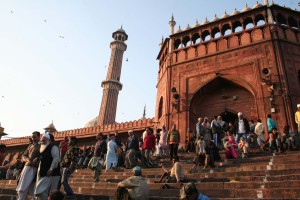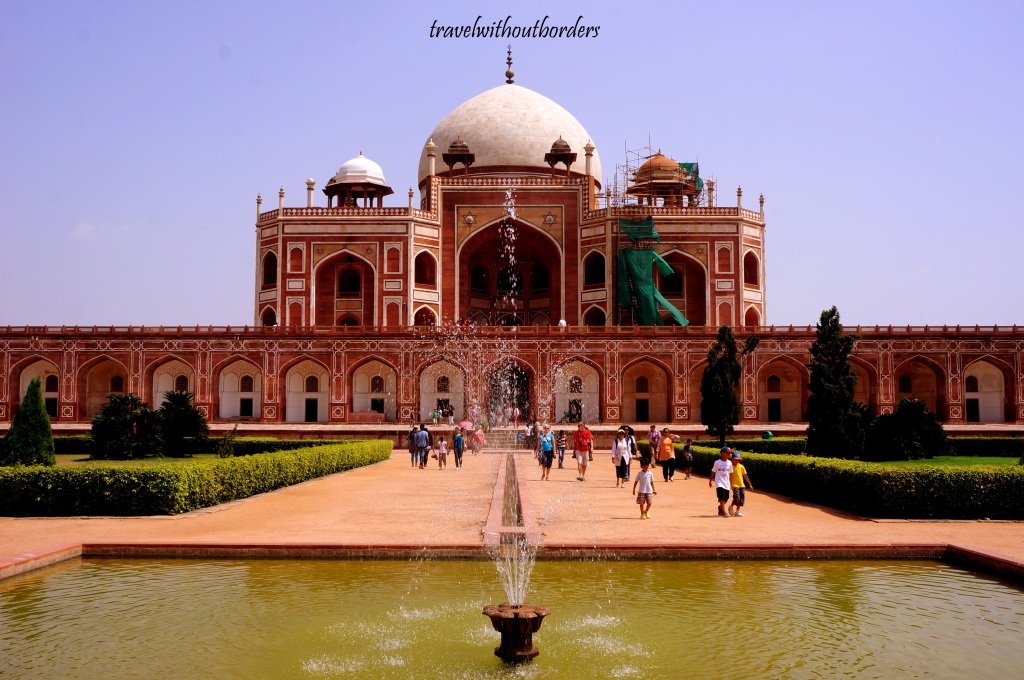ITINERARY
Wed/Thurs, Feb 20/21 Travel
to Delhi arriving Feb 21st
Airport
Transfers
Overnight
Feb 21st – OBEROI NEW DELHI
Fri, Feb 22 Breakfast
– OBEROI NEW DELHI
Visit to
World Health Organization
Group
lunch
Visit
to Rotary PolioPlus offices
Afternoon
Deli sightseeing
Dinner
on your own
Overnight
– OBEROI NEW DELHI
Sat, Feb 23 Breakfast
– OBEROI NEW DELHI
Travel to
Chandigarh
Packed
lunch
Dinner
& overnight – Chandigarh Rotary family home stay
Sun, Feb 24 NID Booth Day
Group
lunch with media interaction
Afternoon
sightseeing
Dinner
& overnight – Chandigarh Rotary family home stay
Mon, Feb 25 NID Mop-up Day
Group
lunch at Rotary Vocational Training Center
Visits
to Chandigarh Rotary Club projects
Chandigarh
Rotary Club meeting
Dinner
& overnight – Chandigarh Rotary family home stay
Tues, Feb 26 NID Mop-up Day
Lunch &
afternoon sightseeing & shopping with Rotary families
Gala group
dinner
Overnight –
Chandigarh Rotary family home stay
Wed, Feb 27 Travel to Delhi
Visit
to Ambala Rotary Club projects en route
Delhi
shopping
Dinner on
your own
Overnight –
OBEROI NEW DELHI
Thurs, Feb 28 New Dehhi
Breakfast – OBEROI NEW DELHI
Breakfast – OBEROI NEW DELHI
Visit to Akshay Pratishthan
School
Group lunch
Visit to St. Stephen's Hospital
- Polio Corrective Ward
Afternoon
Delhi sightseeing
Rickshaw
ride in Chandni Chowk
Dinner on
your own
Overnight –
OBEROI NEW DELHI
Fri, Mar 1 Agra
Breakfast – OBEROI NEW DELHI
Breakfast – OBEROI NEW DELHI
Travel to
Agra
Packed
lunch
Afternoon sightseeing visit
to Agra Red Fort
Optional
Agra shopping
Celebratory
group dinner at AMARVILAS
Sat, Mar 2 New Delhi
Sunrise visit to Taj Mahal
Sunrise visit to Taj Mahal
Brunch
- Amarvilas
Mid-day
hotel checkout & departures
Travel
to Delhi OR depart from Agra for post-NID activities
Airport
transfers
Dinner
on your own
Late
PM departures for home
Sun, Mar 3 Early AM departures for home
These are some of the places we are planning to visit as
time allows on our trip. All monument fees
and still camera fees are included:
DELHI:
Jama Masjid


Jama
Masjid of Delhi is the largest mosque in India. The Jama Masjid stands across
the road in front of the Red Fort. Built between 1644 and 1658, Jama Masjid is
one of the last architectural works of the Mughal emperor Shah Jahan. The
spacious courtyard of the Jama Masjid holds thousands of faithful. Jama Masjid
is located on a mound in the heart of the old city and projects beautifully
into the Old-Delhi skyline. Jama Masjid Mosque was built in red sandstone and
marble by more than 5000 artisans. Originally called the Masjid-i-Jahan-Numa,
or "mosque commanding view of the world", the Jama Masjid stands at
the center of the erstwhile capital city of the Mughals, Shahjahanbad.

Rickshaw Ride in Chandni Chowk
The rickshaw ride at Chandni
Chowk in Old Delhi is a popular activity in the city among international
tourists. The exhilarating ride in cycle rickshaw takes you through hot, dusty
and crowded Chandni Chowk Bazaar to offer eye-popping views of Old Delhi and
its effervescent culture. The trip
transports you back to the days of Mughal Empire with the shops huddle together
on both sides of the narrow labyrinthine streets and alleys. Workshops of
craftsmen, jewelers, eateries, sweet shops, and brand stores offer modernistic
shopping pleasures in chaotic bazaars from medieval era. Hotels, Shiv Temple,
Sunehri Masjid, Sisganj Gurudwara, and churches find spaces in between and add
to the colorfulness of the crowded market area.
India Gate

The India Gate is the national monument of India. Situated in the heart of New Delhi, it was designed by Sir Edwin Lutyens. The monument is inspired by Arc de Triomphe located in Paris, which in turn is inspired by the Roman Arch of Titus. http://en.wikipedia.org/wiki/India_Gate

The India Gate is the national monument of India. Situated in the heart of New Delhi, it was designed by Sir Edwin Lutyens. The monument is inspired by Arc de Triomphe located in Paris, which in turn is inspired by the Roman Arch of Titus. http://en.wikipedia.org/wiki/India_Gate
Qutab Minar


Birla Mandir


Laxmi Narayan Temple, also known as Birla Mandir, is one of
Delhi's major temples and a major tourist attraction. Built by the industrialst
G.D. Birla in 1938, this beautiful temple is located in the west of Connaught
Place. The temple is
dedicated to Laxmi (the goddess of prosperity) and Narayana (The preserver).
The temple was inaugurated by Mahatma Gandhi on the condition that
people of all
castes will be allowed
to enter the temple.
The craftsmen who are
registered with D.C.Handicrafts are the ones who are eligible to find a place
here. The stalls selling handicrafts are allotted on a rotational basis to
craftsmen who come from all corners of the vast & varied land of India at
nominal payment for a period of 15 Days. This ensures that visitors get to buy
authentic wares at prices that have not been inflated by high maintenance costs.
Humayun’s Tomb


After
wandering in wilderness for 25 years, Humayun reoccupied Delhi in the year 1555
AD but he was not destined to rule any longer and died barely six months of his
arrival, from a fall in his library, Sher Mandal. Humayun's tomb was built by
his widow, Hajji Begum around 1565 AD. The Taj Mahal and many other Mughal
buildings are said to have been inspired from Humayun's tomb. Humayun's tomb is
one of the world heritage sites. The tomb of Humayun is based on Islamic
paradise gardens. This type of garden is known as a Charbagh and is based on a
grid system. The square garden is divided into four large squares and separated
by causeways and channels with each square again divided into smaller
squares. http://www.delhitourism.gov.in/delhitourism/tourist_place/humayun_tomb.jsp
Red Fort – Old
Delhi


The Red
sandstone walls of the massive Red Fort (Lal
Qila) rise 33-m above the clamour of Old Delhi as a reminder of the magnificent
power and pomp of the Mughal emperors. The walls, built in
1638, were designed to keep out invaders, now they mainly keep out the
noise and confusion of the city. The
main gate, Lahore Gate, is one of the emotional and
symbolic focal points of the modern Indian nation and attracts a major crowd on
each Independence Day. http://en.wikipedia.org/wiki/Red_Fort
AGRA:
Agra Red Fort


Near the
gardens of the Taj Mahal stands the important 16th-century Mughal monument
known as the Red Fort of Agra. This powerful fortress of red sandstone
encompasses, within its 2.5-km-long enclosure walls, the imperial city of the
Mughal rulers. It comprises many fairy-tale palaces, such as the Jahangir Palace
and the Khas Mahal, built by Shah Jahan; audience halls, such as the
Diwan-i-Khas; and two very beautiful mosques.
Emperor Shah Jahan, who built the Taj Mahal, was imprisoned by his son
Aurangzeb in Agra Fort, from which he had a view of the building erected for
his deceased wife. Shah Jahan is said to have died in the Musamman Burj, a
tower with a beautiful marble balcony. http://agrafort.gov.in/
Taj Mahal

Famous
as one of the wonders, the Taj Mahal
at Agra, India, is epitome of true love. Taj Mahal was built by the famous
Mughal emperor Shah Jahan in the memory of his beloved wife, Mumtaj Mahal. The
architectural beauty and magnificence of the Taj Mahal has never been
surpassed. The Taj Mahal is said to be the most beautiful monument built by the
Mughal rulers and it represents the zenith of the Mughal architecture. Built
entirely of white marbles, the beauty of the Taj Mahal is beyond description.
The beauty of the Taj Mahal has been aptly summarized by the famous English
poet, Sir Edwin Arnold, as "Not a piece of architecture, as other
buildings are, but the proud passions of an emperor's love wrought in living
stones." http://tajmahal.gov.in/

